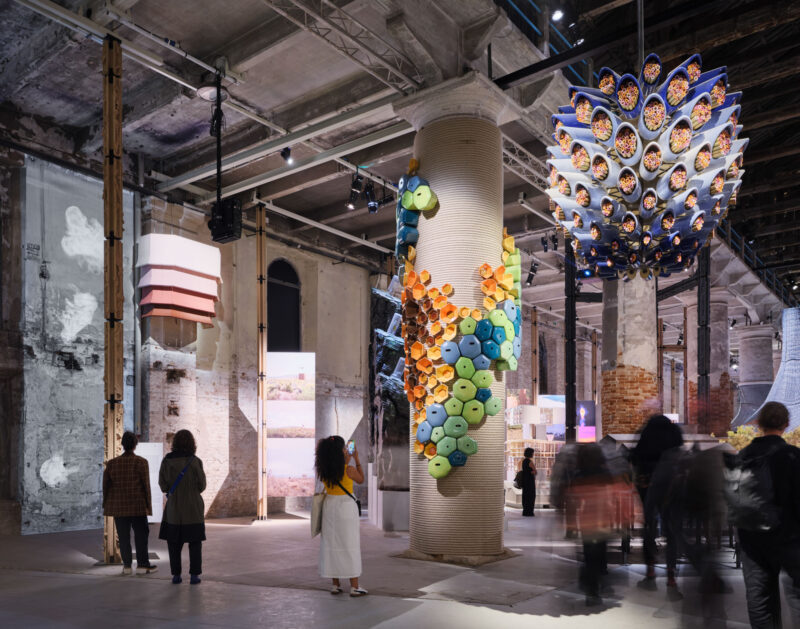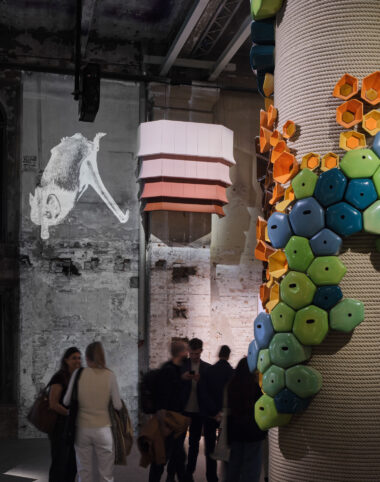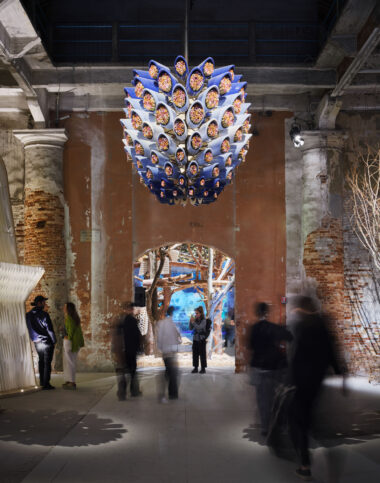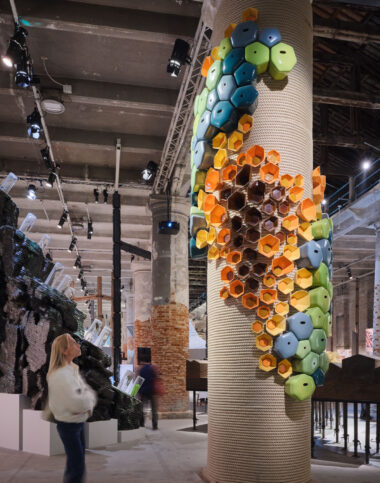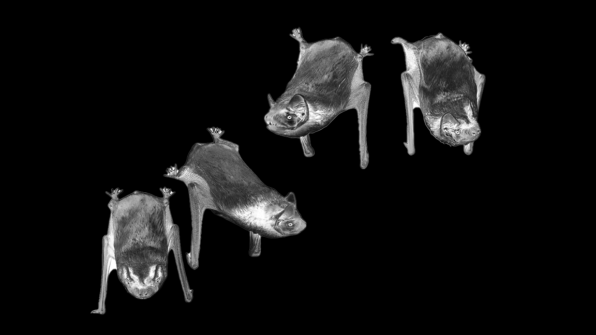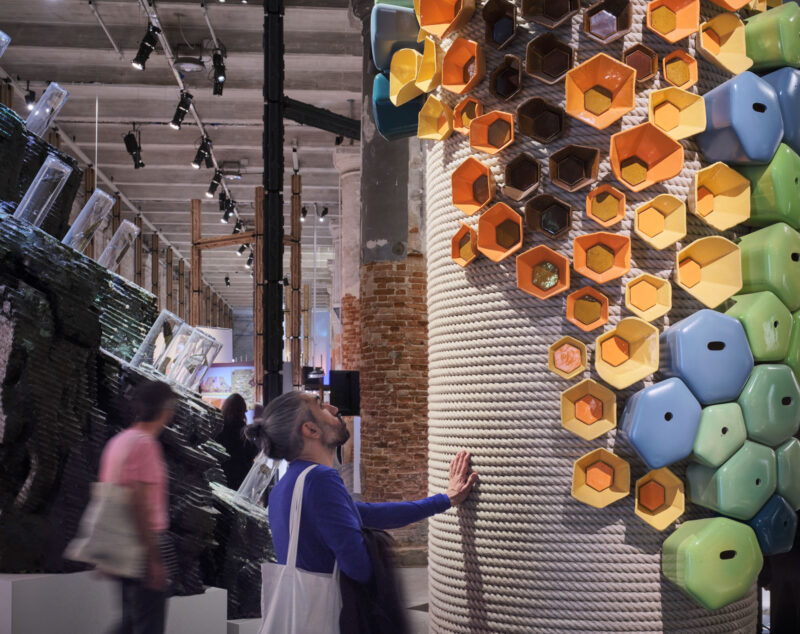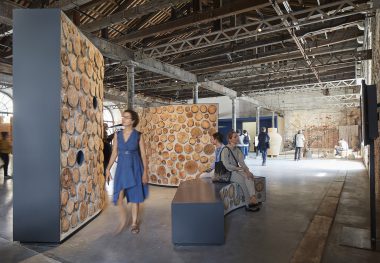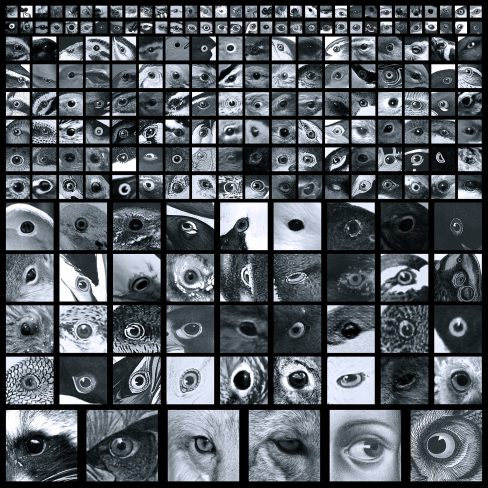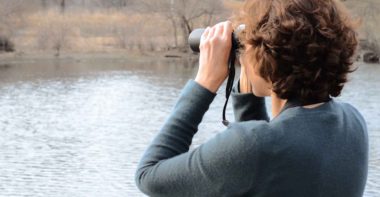The Living Orders of Venice
Location
Arsenale, 19th International Architecture Exhibition of La Biennale di Venezia, Venice, Italy
On View
May 10 – November 23, 2025
Concept and Design
Jeanne Gang and Studio Gang
Artist Collaborators
Andy Brayman, ceramic artist
Kendra Sollars and Lauren Strohacker, video artists
Sponsors
Laura and Tony Davis and Linden Capital Partners
Ann M. Drake
Created for the 2025 Biennale Architettura, curated by Carlo Ratti, “The Living Orders of Venice” seeks to build interest, wonder, and care for urban wildlife.
As our planet’s wild spaces disappear, how can architecture adapt to make cities into more welcoming and supportive habitats for people as well as animals?
The project launches the first Biennale Bioblitz: a crowd-sourced ecological field study of the Biennale grounds. Everyone is invited to participate using iNaturalist, a citizen science app, to record the species they observe at the exhibition, from the fleetest fruit fly to the wiliest wall lizard. This effort aims to generate awareness of Venice’s intertwined ecosystem, as well as a data set that contributes to existing science and suggests opportunities for future habitat creation and conservation.
On view in the Arsenale are three animal nesting structures created for important species in Venice. Designed by Studio Gang in conversation with biologists, these prototypes attach to existing human architecture to support the specific habitat conditions (spatial, material, and behavioral) that each species needs to thrive. Their novel forms playfully engage the classical orders of architecture: capitals, columns, and entablature.
Project Sponsors
Laura and Tony Davis and Linden Capital Partners
Ann M. Drake
Project Team
Ceramic Artist: Andy Brayman, The Matter Factory
Video Artists: Kendra Sollars and Lauren Strohacker
Scientific Advisors: Jacques Laesser, Swiss Ornithological Institute; Allen Lawrance, Peggy Notebaert Nature Museum; Liza Lehrer and Sean Obrochta, Lincoln Park Zoo Urban Wildlife Institute; Joy O’Keefe, University of Illinois Urbana-Champaign
Structural Engineer: Rory McGowan, Connor McGrath, and Simon Clavelin, Arup
Fabricators: Sam Link, Laylo Studio; Collin Smith, Active Alloys; David Wegter and Jeff Snodgrass, Presentation Studios International (PSI)
Installation Contractor: Veronica Green, Exhibition Care
AV Contractor: Piero Zennaro, Target Due
Special Thanks
Wildlife Footage Providers: Susanne Lenhard, Maid of Bats/Fledermaushilfe Hamburg; Heather Frantz, Pennsylvania State University; Angela and Kurt Greter
Bioblitz Advisors: Alison Young, iNaturalist; Maria Chiara Pastore and Massimo Labra, National Biodiversity Future Center; David Bild, Peggy Notebaert Nature Museum
Digital Experience Advisors: Nico Guillin and Avi Grayson, Local Projects
Related
ArchDaily — "Eyes of the City: Seeing and Designing Beyond the Human"
Studio Gang’s Foundational Contribution to the 2019 Shenzhen Biennale of Urbanism/Architecture is on ArchDaily
WTTW Urban Nature — “Building a Bird-Safe City”
Jeanne Gang is featured in this video highlighting efforts to build a bird-safe city.
